Iranian MP Affirms Support For Syria Amid Own Economic Crisis
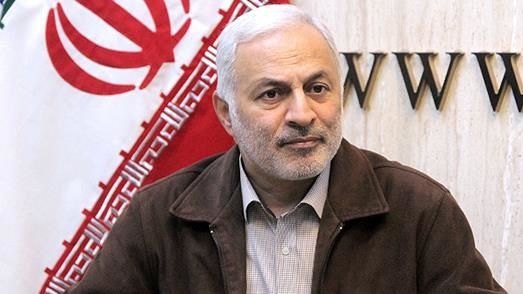
A senior parliamentarian has assured Iran's commitment to stand by Syria's side, both in its “ongoing battles and economic endeavors”.

A senior parliamentarian has assured Iran's commitment to stand by Syria's side, both in its “ongoing battles and economic endeavors”.
During a visit to Damascus, Vahid Jalalzadeh, the head of Iran's parliamentary national security and foreign policy commission, conveyed the message that Iran's support to Syria extends beyond military aid.
"Just as we have been with the Syrian government and people in the war with terrorists, we will also be with them in the economic war," Jalalzadeh said during his visit. He also emphasized Iran's stance against foreign presence on Syrian soil, rejecting any foreign intervention, “be it Turkish or American.”
Arriving in Syria on Monday with a delegation for a three-day visit, Jalalzadeh held discussions with Prime Minister Hussein Arnous and Syrian Foreign Minister Faisal Mekdad.
The extent of Iran's military expenditures in support of Syria's President Bashar al-Assad remains undisclosed. While initial estimates placed the support between $20 billion and $30 billion, evidence of Iran's increasing industrial capabilities suggests the true figure could be significantly higher. Leaked documents from Iran's foreign ministry reveal that Syria's debt to Iran has reached $50 billion, stemming from a long-term agreement signed in January 2019.
Many Iranians have raised discontent with their government's regional policies and its financial aid to militant groups, particularly in light of domestic economic challenges. Inflation exceeding 50 percent and a devalued national currency have led to widespread economic hardship, with nearly half the population living below the poverty line.
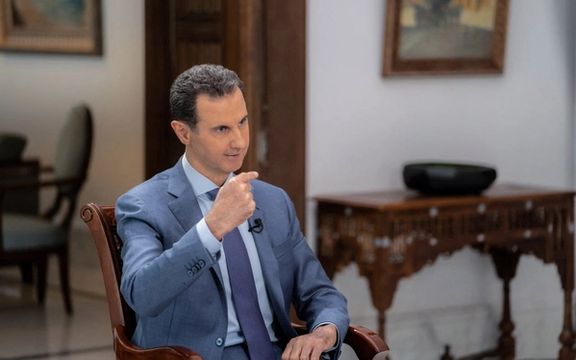
In a bizarre claim, Syria’s dictator president, Bashar Assad, says that the support of Iran and Russia has had an important effect on the stability of Syria.
Speaking in a rare interview with Sky News, Assad claimed "the close relations between Syria and Russia and Iran prove that Damascus knows how to choose its friends.,” highlighting the brutal force the three governments employed to crush dissent during the civil war.
The war, which broke out in 2011, rages on with the UN estimating that more than 300,000 civilians were killed in the first decade of the conflict.
During its 12 years, the war has forced more than half of the country's 22 million pre-war population to flee their homes with the civil war a major factor in Europe's migrant crisis.
The governments of Canada and the Netherlands recently filed torture complaints against Syria in the International Court of Justice over the "unlawful killing" of thousands of civilians.
Assad added: “The support of our friends had an important impact on the stability of Syria. The support of Iran and Russia helped Syria to resist the crisis that engulfed the country.”
Syria is far from stable continues to be hugely swayed by both Moscow and Tehran, whose own relationship has also been challenged by the desire to gain a greater foothold in Syria, Iran’s presence only putting Russia’s own troops at risk from Israel attacks as the shadow war between Iran and Israel continues with a major focus on Syria.
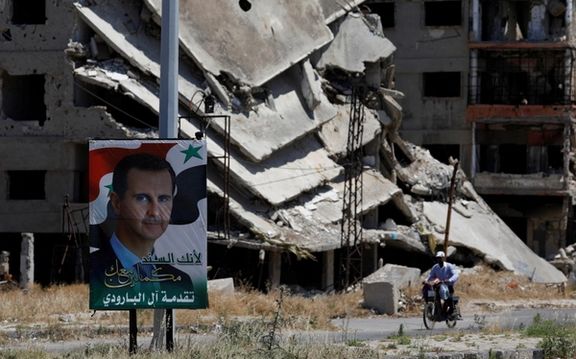
Just last week, Iran International reported on new research by Israel’s Alma research institute which shows Iran’s investment into weapons plants in Syria continues, at the expense of the Iranian people suffering the worst economic crisis in decades.
The Alma report claimed: “Iran’s major focus is to develop and manufacture precision missiles and rockets, cruise missiles, and unmanned aerial vehicles (UAVs) on Syrian soil”.
Assad did not refer to the ongoing strengthening of Iran’s proxies on its doorstep, nor the permanent presence of IRGC and Quds forces on Syrian soil during his interview.
This month marks 10 years since then President Obama decided not to bomb Syria after chemical weapons were used against civilians in rebel-held areas. President Assad has now regained control of the capital Damascus and most urban areas.
“We knew from the beginning of the war that this war would be long. It will be and it won't be a temporary crisis - as some thought - but no, no one could have predicted the details,” he told Sky News, seemingly unconcerned that the country has reached the depths of despair, compounded by last year’s tragic earthquake which left over 8,000 civilians dead.
Moving the blame away from his tyrannical regime, Assad pointed the finger at “terrorism” for the country’s destruction. “If we assume that it was the government that started killing and displacing people, then the government is responsible, but terrorism existed and the government was fighting terrorism, it was terrorism that killed, destroyed and burned.,” he claimed.
Soon after anti-regime protests started in early 2011, Assad’s government resorted to use of military force against protesters with Iran’s backing.
The World Bank’s latest report asserts that “although large-scale armed conflict has subsided, Syria continues to rank among the top countries in terms of violent deaths”, noting that “multiple domestic and external shocks are adversely affecting the economy”.
In 2020, it was revealed by a prominent lawmaker that Iran had spent between $20 billion and $30 billion in Syria to prop up President Bashar al-Assad and fight Islamic State but as revelations of Iran’s growing industrial capabilities continue, the true number is believed to be far higher.
“We have probably paid $20-30 billion to Syria, and we have to take that money back,” Heshmatollah Falahatpisheh, a member of the Iranian parliament's national security committee, said in an interview with Etemad Online at the time. Little has changed since, regime activities in Syria seeming to only step up, not down.
In May, Iran International reported that based on leaked documents from the Iranian foreign ministry, that Syria owes Iran $50 billion. Iranians often express strong disapproval of the regime’s regional policy of establishing and supporting militant groups and its involvement in Syria, while inflation has surpassed 50 percent in Iran. Iran’s national currency has fallen 12-fold in the past five years and nearly half of the population lives below the poverty line.

Human rights organizations have raised alarm over more executions in Iran, with at least nine individuals hanged in the past two days alone.
Four prisoners were executed for alleged drug-related crimes, while five men from Marand faced execution on charges of rape. The situation has garnered international attention as concerns mount over the Iranian government's capital punishment practices.
On Wednesday, Manouchehar Khazaei, a former member of the police force, was executed in Hamedan for drug-related offenses. Additionally, Hossein Nasiriyan and Hasan-Ali Shakib were hanged on Tuesday in Shiraz Central Prison, both on drug-related charges. Another prisoner, Ahad Hashemi, was executed in Hamadan prison on Wednesday after spending seven years in jail for drug crimes.
Meanwhile, the execution of five men from the northwestern city of Marand for alleged rape was carried out on Wednesday, though the identities of the executed individuals have not been disclosed by Iranian authorities or media.
The human rights organization Hengaw has further expressed concern regarding potential death sentences for four protesters from Sanandaj, accused of "moharebe" or "war against God" during the revolutionary uprising.
These executions coincide with a recent report from the United Nations High Commissioner for Human Rights, highlighting a distressing trend of increased capital punishment in Iran. The report revealed that in 2022, 582 individuals were executed—a staggering 75% rise compared to the previous year's figure of 333. Notably, this included the execution of three juveniles.
In 2023, alarming parallels persist, with 94 executions recorded in January and February alone. The report also highlights the execution of several individuals allegedly involved in nationwide protests.

The US State Department reiterates its commitment to Iranian women's rights amidst President Ebrahim Raisi's comments on intensified hijab enforcement.
Matthew Miller, the State Department Spokesman, on Wednesday emphasized the importance of allowing women to make personal choices about their attire.
"It is our belief, as we’ve said before, that women in Iran and everywhere should be free to wear what they want," said Miller. "Iranian women should not have to worry about Iranian authorities using surveillance technology or any other methods to impose control over them. The United States has and will continue to take action to support the human rights and fundamental freedoms of the people of Iran, including women – the women and girls of Iran, and to work with allies and partners to pursue accountability for the perpetrators of human rights abuses."
Raisi's recent statement, issued on Wednesday, threatened an end to protests against the hijab, attributing them to foreign influences. He pledged to employ a response to quell the protests and "raise awareness" among those not adhering to the hijab.
"Certain individuals, not adhering to hijab, may lack awareness. Our duty is to raise their awareness,” Raisi asserted, adding that "foreign influences are orchestrating an organized campaign to abolish the hijab."
Raisi's announcement comes against the backdrop of ongoing defiance by Iranian women and girls against the compulsory headscarf. Notably, Raisi's comments arrive weeks before the anniversary of the tragic death of Mahsa Amini while in the custody of the morality police.
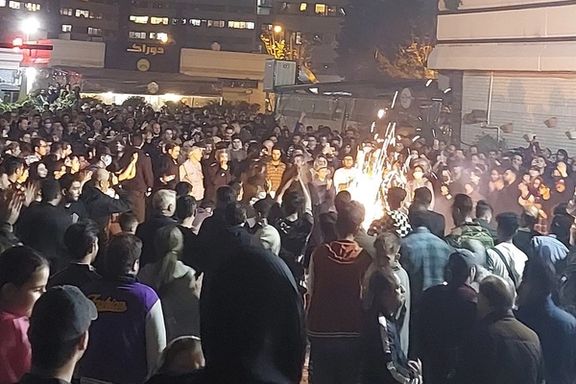
The Revolutionary Guards (IRGC) spokesman threatened Iranian journalists this week not to help the enemy with their work, meaning to avoid critical reporting.
"Creating hope against the hostile media’s attempts to cause disillusionment is one of the most important missions of those working in the media," stated Ramezan Sharif during a ceremony on Monday, held in honor of National Journalists Day (August 8).
President Ebrahim Raisi visited the state broadcaster (IRIB), a massive organization with over 40,000 employees, to express his appreciation for their work, ahead of Journalists Day. In a brief speech, he asserted that his government listens to criticism.
However, Iranian journalists are currently remembering two colleagues who have been imprisoned for almost a year due to their reporting on the death of Mahsa Amini while in custody in September 2022. They are also paying tribute to over a hundred other journalists who have been arrested since then and handed various punishments, including prison sentences, bans on using mobile phones and social media, travel restrictions, and even lashes.
Several newspapers, including Shargh, Ham-Mihan, and Etemad, dedicated articles on Monday to Niloofar Hamedi, a reporter from the reformist Shargh newspaper, and Elaheh Mohammadi, a reporter for the reformist Ham-Mihan.
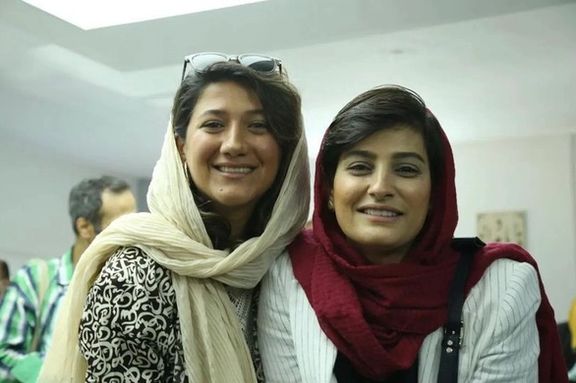
These two young women were the first journalists to cover Amini’s story, which sparked widespread protests across the country from mid-September to early January.
Under the headline "Journalists More Abandoned Than Ever," with photos of the imprisoned journalists displayed on its front page, Ham-Mihan, a newspaper not directly controlled by the government, highlighted the intensified lack of freedom of speech and job security that journalists have faced in the past year. The newspaper stated that journalism has now become a "high-risk" profession.
Since last year’s protest movement, the press has had to contend with "professional claimants" who scrutinize newspapers daily to find reasons for legal action. Ham-Mihan added that authorities expect both print and online media to align only with the views of those in power.
A photo taken by Hamedi at the hospital where Mahsa Amini was in a coma in 2022, with her parents embracing her, rapidly spread across social media platforms. Amini had been fighting for her life for three days after sustaining injuries during her arrest by the morality police for wearing her hijab “improperly.”
Mohammadi in turn managed to travel to Amini’s hometown of Saqqez in western Iran to report on her funeral on September 17, which thousands attended.
The two journalists, accused of being CIA agents by the Revolutionary Guards' intelligence organization (SAS), faced charges of propaganda against the regime and conspiracy to commit acts against national security.
Hamedi and Mohammadi were tried behind closed doors in June and are awaiting sentencing. Since their arrest over 310 days ago, they have been denied family visits on many occasions, have never been granted furlough, and have been denied access to an attorney during their trials.
Dozens of other journalists are currently awaiting sentencing. Some have been banned from journalism, including Etemad newspaper’s managing director, Elias Hazrati, who was recently prohibited from any media work for a year.
Elaheh Mohammadi’s twin sister, Elnaz Mohammadi, who has also been a journalist for over a decade, told Etemad newspaper that her sister and Niloufar Hamedi were driven by their commitment to society and their calling as journalists.
“There is pain, and it’s so heavy that it diminishes hopes for the future of journalism in Iran. But I must say, the light is still alive and shining,” she said.
“Journalists’ Day is still a good occasion for us to remind ourselves of what is happening to the media in the country, how much we have to self-censor, and sometimes not do what we thought was one hundred percent right,” Niloufar Hamedi’s husband, Mohammad-Hossein Ajorlou, told Etemad.
Government pressures on journalists are forcing them to leave the country, pursue other jobs if they choose to remain in Iran, or compromise the quality of their work to avoid trouble if they continue as journalists, Ajorlou added."

The British Ambassador to Iran has been summoned to Iran’s foreign ministry after he published comments calling for the release of jailed journalists.
Simon Shercliff tweeted on Tuesday, acknowledging Iran's celebration of August 8 as the 'Day of the Journalist'. The ambassador expressed solidarity with journalists facing hindrances in their work and called for the release of arbitrarily detained individuals, including journalists.
The Iranian Ministry of Foreign Affairs deemed these remarks as "irresponsible, and out of diplomatic norms," asserting that such comments amounted to interference in Iran's internal affairs and were unacceptable. Shercliff was then summoned to the ministry.
"The UK, with its indefensible record towards the Iranian people, is not in a position to comment on the Islamic Republic of Iran. Here is the Islamic Republic of Iran, and we will not allow the sovereignty of the country to be neglected with arbitrary actions," stated the foreign ministry.
Iran has been facing international criticism for its press freedom record for decades. The country ranks third globally in terms of incarcerated journalists, trailing only China and Myanmar, according to recent reports. The 2023 World Press Freedom Index, compiled by Reporters Without Borders (RSF), positioned Iran at the lowest rung on the list, only marginally above countries such as Vietnam, China, and North Korea.
Over the years, Iran has detained hundreds of journalists, writers, and bloggers, often on charges of jeopardizing national security through the expression of their opinions. Tragically, some of these individuals lost their lives while in custody.